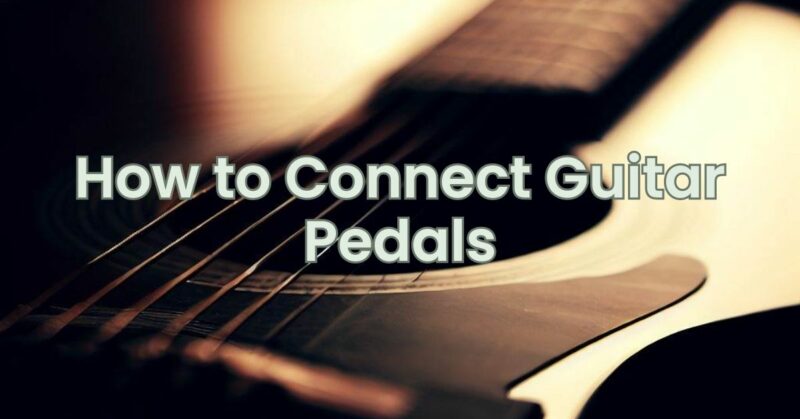Guitar pedals are essential tools for guitarists looking to expand their tonal palette and create unique soundscapes. Whether you’re a beginner or an experienced player, understanding how to properly connect and chain your guitar pedals is crucial to achieve the desired effects and maintain signal integrity. In this article, we will provide a step-by-step guide on how to connect guitar pedals effectively.
Step 1: Gather Your Pedals and Cables
Before you start connecting your guitar pedals, gather all the pedals you want to include in your signal chain. Additionally, ensure you have the necessary cables, such as patch cables and instrument cables, of appropriate lengths to connect your pedals.
Step 2: Plan Your Signal Chain
Decide on the order in which you want to arrange your pedals. The general rule of thumb is to place your time-based effects (such as delay and reverb) at the end of the signal chain, modulation effects (such as chorus and phaser) in the middle, and gain-based effects (such as distortion and overdrive) towards the beginning. However, feel free to experiment and rearrange pedals based on your desired sound.
Step 3: Connect Your Guitar
Plug one end of your instrument cable into your guitar’s output jack and the other end into the input jack of the first pedal in your signal chain. Ensure a secure connection to avoid any unwanted noise or signal loss.
Step 4: Connect Pedals in Series
For most setups, connecting your pedals in series is the standard configuration. Use short patch cables to link the output of one pedal to the input of the next pedal in your signal chain. Repeat this process until you have connected all the desired pedals.
Step 5: Power Your Pedals
Ensure that each pedal is powered using the appropriate power supply or battery. Many pedals require 9V DC power, but be sure to check the specific power requirements for each pedal to avoid damage. Use a dedicated power supply unit or a pedalboard with built-in power to provide consistent and clean power to all your pedals.
Step 6: Adjust Levels and Settings
Once all your pedals are connected and powered, it’s time to fine-tune the settings. Set the desired level, tone, and effect parameters on each pedal to achieve your desired sound. Experiment with different combinations and settings to explore the full potential of your pedalboard.
Step 7: Test and Troubleshoot
After setting up your pedalboard, test each pedal individually and in combination to ensure they are functioning properly and producing the desired effects. Pay attention to any unwanted noise, signal loss, or hum, and troubleshoot accordingly. Check cable connections, power supply, and pedal settings to resolve any issues.
Step 8: Expand and Modify
Connecting guitar pedals is a dynamic process, and you can continuously modify and expand your setup. Consider adding new pedals, experimenting with different arrangements, and exploring alternative routing options to further enhance your sound and creativity.
Conclusion:
Connecting guitar pedals is an exciting and rewarding process that allows you to explore a wide range of sonic possibilities. By following the steps outlined in this guide, you can effectively connect your guitar pedals, create a well-organized signal chain, and unleash your creativity. Remember to plan your signal chain, use quality cables, power your pedals correctly, and fine-tune your settings. With practice and experimentation, you’ll be able to harness the full potential of your pedalboard and create captivating sounds that elevate your guitar playing to new heights.


